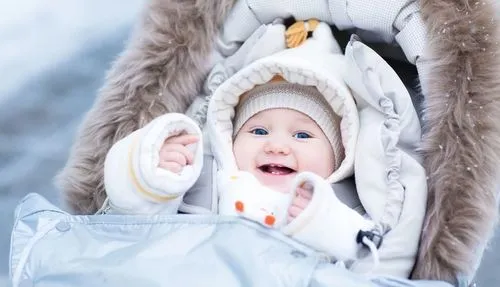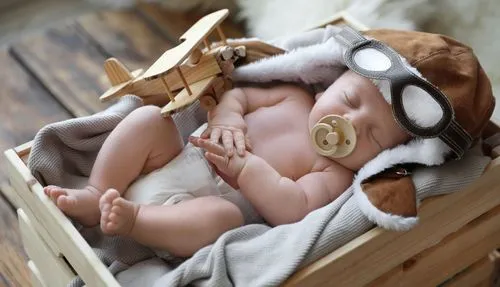10 toy safety tips every parent should know
September 04, 2023
Katka

Welcoming a child into your world brings unparalleled joy, but if you're like most parents, it's also accompanied by a growing checklist of concerns. Amidst the laughter, playtime, and countless memories, there's that ever-present urge to shield your little one from any harm. Toys, though sources of fun and learning, come with their own set of considerations: Are they safe? Age-appropriate? Free from potential hazards?
Navigating the maze of children's toys can feel a tad overwhelming, almost reminiscent of being a first-timer in a vast amusement park. So many choices, so many flashing lights and sounds! But fear not, because we're here to simplify things for you. In this article, we'll embark on a journey together, unraveling essential toy safety tips, and arming you with knowledge to make playtime both fun and secure.
Ready to dive in and make playtime safer for your bundle of joy? Let's get started!
Why toy safety is essential
As a parent, every tiny giggle and wide-eyed wonder your child exhibits is priceless. But imagine this: amidst the merriment, your little one picks up a toy that's too small, or perhaps, comes apart easily. The joyous atmosphere could quickly take a turn. Incidents like choking, allergic reactions, or even injuries aren’t just tales told to scare new parents; they're real possibilities that emphasize the importance of toy safety.
Nowadays, the lens of parenthood has shifted. A toy isn't just a plaything; it's a tool for development, learning, and exploration. Ensuring that these tools are safe protects not just your child's physical well-being, but also their emotional and developmental growth. No one wants playtime marred by avoidable accidents!
"A toy isn't just a plaything; it's a tool for development, learning, and exploration."
Moreover, being proactive about toy safety cultivates an environment where your child can explore freely, and you can have peace of mind. After all, a child's laughter, unhindered by worries, is one of the purest sounds in the world. By prioritizing safety, we can ensure that this laughter remains untainted and joyous, just as childhood should be.
Key features to look for in safe toys
As you venture into the world of toys, you'll quickly notice that there's more to a toy than meets the eye. Beyond the catchy jingles and vibrant colors, certain features stand as hallmarks of safety and quality. Just like you'd check the ingredients of a baby food jar, scrutinizing toys ensures that playtime remains as delightful as intended.
Let's delve deeper into the specific features that set safe toys apart from the rest:
Trusted brands
Trusted brands often have a reputation built on years of rigorous safety testing and adherence to high-quality standards. Investing in toys from these names isn't just about brand loyalty; it's about knowing that the toy in your child's hands has undergone scrutiny.
Over the years, these brands have established trust by consistently putting child safety at the forefront of their design and production processes. When opting for such brands, you're also benefiting from their experience and expertise in the realm of child-safe toys.
Safety standard labels
Labels aren't merely stickers; they're a toy's resume. Safety standard labels inform parents about a toy's compliance with recognized safety benchmarks. Before making a purchase, familiarize yourself with these labels and what they mean. These badges of safety can often be found prominently displayed on packaging, acting as a quick reference for parents. They are a testament to rigorous testing and adherence to certain safety regulations, ensuring the toy meets or exceeds set standards.
Certification boards
Think of certification boards as guardians of toy safety. These boards independently evaluate toys against stringent safety criteria, offering an additional layer of assurance. When a toy carries a certification mark, it's like getting a nod from a trusted expert. In the US, that’s the Consumer Product Safety Commission (CPSC) and if you’re based in the EU, keep an eye out for the CE Marking These organizations dedicate themselves to continually updating safety standards based on research and feedback. Their endorsement is akin to a seal of approval, suggesting that the toy has met high safety expectations.
Choosing the right toys: our tips and best practices
The vast array of choices can feel both exciting and daunting, especially for a new parent! Not all toys are created equal, and as every child is unique, so are their playtime preferences and needs. But fret not, for we've compiled a comprehensive list of tips and best practices to guide you in making the right toy selections. From understanding age appropriateness to being wary of potential hazards, here's what every discerning parent should know:
1. Age appropriateness
Always check the age recommendation on toy packaging. These guidelines are crafted based on the developmental needs and safety considerations of various age groups. A toy perfect for a toddler might pose risks for an infant.
2. Avoid small parts for young children
For children under 3, toys with small parts can be choking hazards. Be extra cautious and use a small parts tester, or consider the "toilet paper roll" test: if a toy or its part can fit inside a toilet paper roll, it's too small!
3. Watch for long cords or strings
Toys with long cords, strings, or ribbons can pose potential dangers. These components can become entangled around a child's neck, leading to strangulation hazards. Always prioritize toys designed with child-safe lengths and structures.
4. Non-toxic materials
It's vital to ensure that toys are made from non-toxic and BPA-free materials — so check the label! Children, especially toddlers, have a tendency to put toys in their mouths. Safeguarding against harmful chemicals and materials is a top priority.

5. Check for sharp edges and points
Toys should be free from sharp edges or protruding points. Such designs can lead to unintended cuts or injuries during play, which isn’t fun for your child or you! Regularly inspecting toys, both when purchasing and as they experience wear and tear, can help prevent potential accidents.
6. Robust construction
Choose toys that are known for their durable construction. A robust toy not only lasts longer but also minimizes the risk of breaking into smaller, hazardous pieces. When a toy can withstand the test of energetic play, it's a win for both safety and value.
7. Noise consideration
While sound-emitting toys can be engaging, it's crucial to monitor their volume levels. Some toys might produce sounds that are uncomfortably loud, potentially harming a child's sensitive hearing. If you find a toy loud when held at arm's length, consider its proximity to your child's ears.
8. Washable and hygienic
Cleanliness is paramount, especially with toys that are frequently handled. Opting for washable toys, particularly plush ones, ensures they remain germ and allergen-free. Regular cleaning can extend a toy's life and keep your child healthy during play.
9. Read reviews and recalls
Before making a toy purchase, it's wise to research online reviews and check for any recall announcements. Gaining insights from other parents can guide you toward safer choices. Staying informed is an active step in ensuring playtime remains hazard-free.
10. Secure battery compartments
Toys equipped with batteries should have sturdy, child-resistant compartments that require screwdrivers to open. It goes without saying that batteries, if ingested, can lead to severe health emergencies. Always ensure battery compartments are securely closed and beyond a child's ability to open.
It is not only inappropriate toys that can pose a potential danger. The house and its surroundings are full of things and places that need attention so that a child can move freely and safely. Find out how to baby-proof your house and garden and discover essential tips for child safety.

The importance of parental supervision
While selecting the right toys is an essential first step in ensuring child safety, it's only part of the equation. The dynamic, curious nature of children means that even the safest toys can become hazards under certain circumstances. This emphasizes the irreplaceable role of parental supervision during playtime. Let's discuss some key reasons why keeping a watchful eye is a non-negotiable aspect of child safety:
Preventing choking incidents
Even toys designed for a child's age group can pose choking risks if broken or misused. Children often explore objects by placing them in their mouths, heightening the danger. A watchful parent can intervene promptly, minimizing the risks of ingestion.
Monitoring toy wear and tear
Toys, over time, experience wear and tear, potentially leading to the creation of sharp edges or the detachment of small parts. Regular supervision allows parents to spot these issues early and either repair or discard the toy before it becomes a hazard.
Ensuring safe interaction with siblings
When children of varying ages play together, there's a chance younger kids might access toys not meant for their age group. Supervision ensures that older children's toys, which might pose risks to younger siblings, remain separate and safely out of reach.
Encouraging safe play habits
Children learn by example — your example. Supervising playtime isn't just about preventing immediate dangers; it's also an opportunity to teach children safe play habits, fostering a safety-conscious mindset for the future.
Final thoughts
Being a parent, every moment is a mix of learning and loving, so ensuring our children's safety remains paramount. Just as a baby monitor app gives parents the peace of mind to oversee their little ones from afar, being well-informed about toy safety equips us to create a secure environment for our children's growth and exploration. The toys our children interact with are not mere distractions but bridges to creativity and growth. So, by making informed choices and maintaining vigilant supervision, we can ensure these cherished moments of play are not just memorable, but also safe. After all, the heart of parenting lies in nurturing today while safeguarding tomorrow!
Continue reading...
Show all articlesCopyright & trademark notices
Apple, the Apple logo, and iPhone are trademarks of Apple Inc., registered in the U.S. and other countries and regions. App Store is a service mark of Apple Inc. Mac App Store is a service mark of Apple Inc. Google Play and the Google Play logo are trademarks of Google LLC. Windows® and the Windows logo are either registered trademarks or trademarks of Microsoft Corporation in the United States and/or other countries. Linux® is the registered trademark of Linus Torvalds in the U.S. and other countries.


